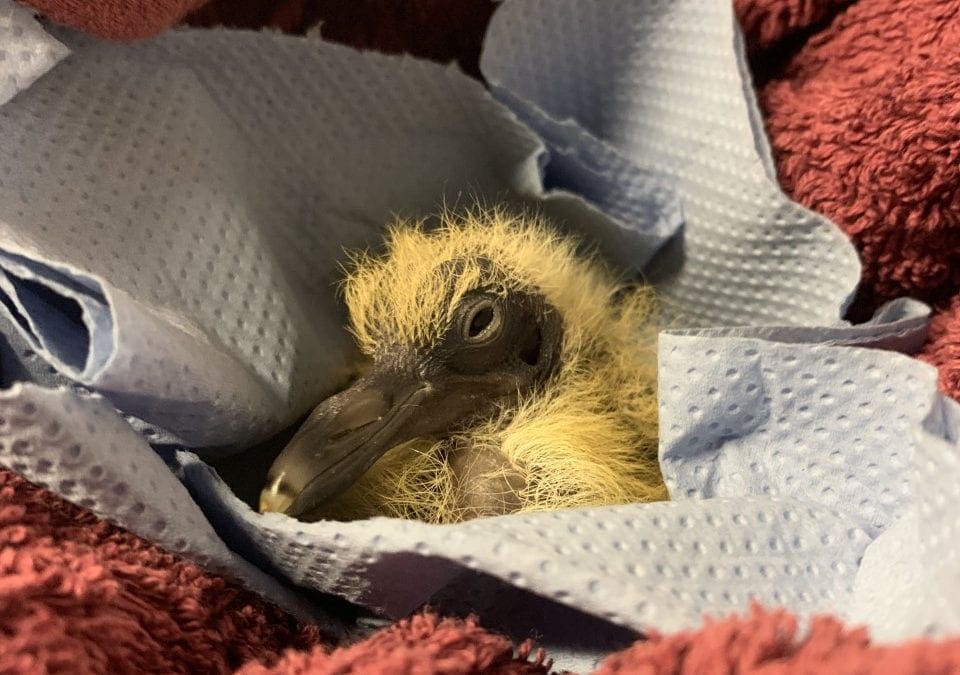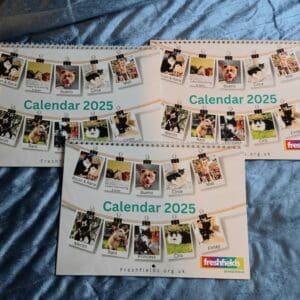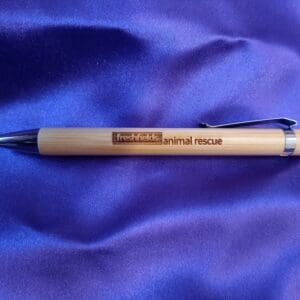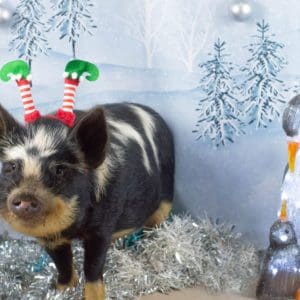We spoke too soon when we said summer was over and that things were calming down. Obviously nobody touched wood! A grebe chick recently arrived, strangely, it was found sitting by a roadside with no sign of it’s mother.
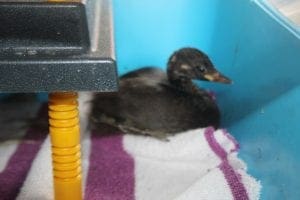
Fast on the grebe’s heels came three woodpigeon chicks, all from different broods.
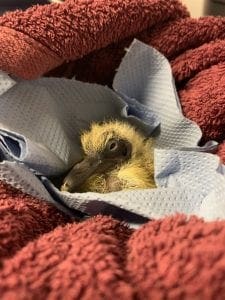
These birds do breed all year round.
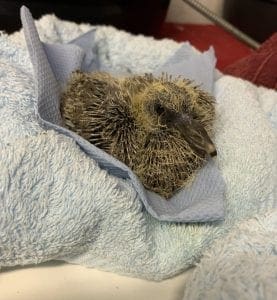
They are wonderful patients when young and are easily reared, however, if they arrive as adults they do tend to thrash around in their enclosures which can result in wounds taking longer to heal.
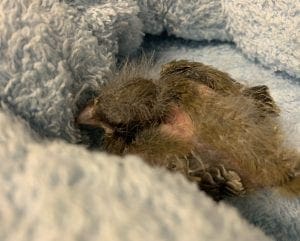
The arrival of a finch chick and several baby hedgehogs finally convinced us that summer is far from over.
This hedgehog came in with a horribly infected wound that was absolutely riddled with maggots.
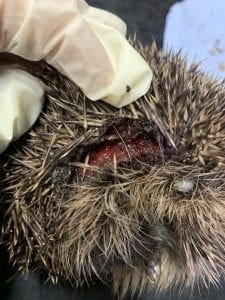
Look away now if you’re squeamish!
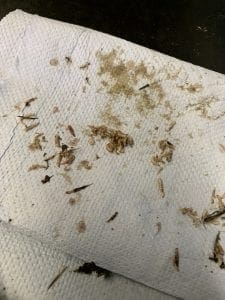
Fly strike is common with injured wildlife, it’s put us all off flies for life!
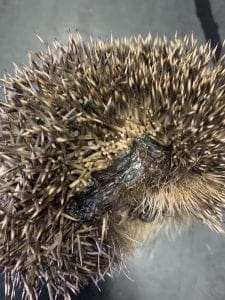
Thankfully this littl’guy made a fantastic recovery.
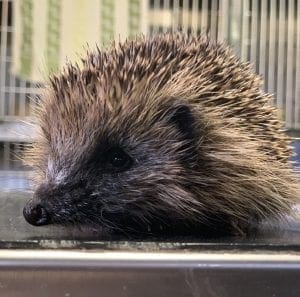
It’s good luck stories like this that keep us all going.
We have now released our remaining gulls and are returning an endless stream of hedgehogs back to the wild along with a variety of birds. Result!
Drum roll please…..
Time for an update on our guinea pigs. Remember the eight pregnant ladies that arrived recently?
Well, to date, two mothers miscarried, one is still heavily pregnant, so much so she looks like she’s about to burst, while the remaining mums have produced four boys and four girls. Mothers and babies are all doing well, although sadly they all have ringworm so will need an anti-fungal treatment.
Following veterinary advice, we don’t neuter our female guinea pigs as the surgery is more complicated and therefore more risky. We only neuter our males, but each operation costs £50, so any financial contributions towards these operations would be most appreciated, especially during these difficult financial times.
If you are interested in adopting any of our young guinea pigs, please watch this space. We’ll let you know when they are up for adoption.
What we need this week
We urgently need guinea pig food, guinea pig tunnels/ guinea pig cages, in fact, all things guinea pig! We are also desperately short of long shredded paper.
We’d also be extremely grateful if anyone is able to contribute financially to our current cash crisis appeal please click HERE.
Please click HERE if you would like to purchase anything from our wish list.
A huge, huge thank you to anyone who can help, we really DO appreciate it.
Out and about early Autumn.
This is the time of the year when bats begin to build up fat stores for the winter, it’s also mating season so listen out for the special calls that the male bats use to attract females. The males will call from a variety of stationary sites, like tree hollows or inside crevices. Their calls include purrs, clicks and buzzing and once heard, are never forgotten, so maybe check out some of your local bat walks this year.
Although bats mate now, the eggs will not be fertilized until may…that ‘delayed fertilization’ again, that we mentioned last week! Each male bat is capable of mating with over thirty females, and although the females don’t breed until they’re two years old, the males are sexually active at one year old. Fascinating stuff eh?
For those of you who struggle to identify members of the crow family, here’s a quick guide.
The jackdaw is the smallest, being up to 33 cm in length. They have quicker wing beats and the back of their heads are grey. They are commonly seen in flocks but also alone. They feed on grubs, insects and mice.
Rooks are up to 46 cms in length. They are more sociable than other members of the crow family, feeding and flying in large numbers and building communal nests in tree tops. They mainly feed on grubs, seed and other birds eggs. They are easily identified by their pale beaks.
The carrion crow is up to 47 cms in length, which makes it slightly smaller than a raven. It is a notorious egg thief and is usually a solitary bird, unlike the rooks who congregate in rookeries. It is all black from bill to claw and like all members of the crow family is highly intelligent. More on that and crows in general another time!
Did you know….
That ants hibernate?
And that seahorses mate for life and hold each other’s tails when they travel?
And Finally……..
Always remember to seek advice from the wildlife staff before bringing an animal to the rescue. If an animal is seriously injured, please take it to a vet as we don’t always have a vet on site. Most vets treat wildlife for free.

